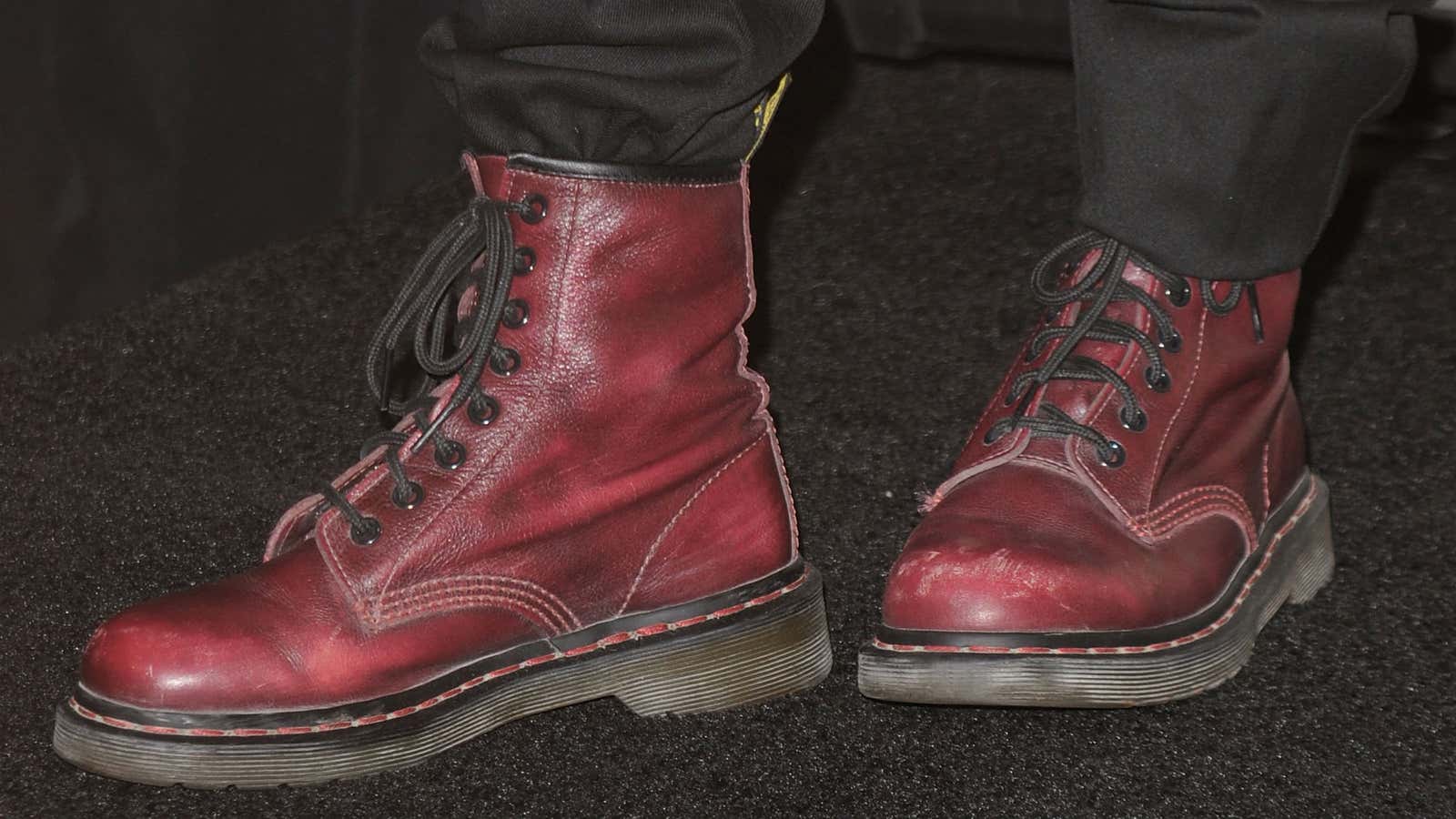European private equity house Permira—which paid $485 million to snap up the iconic British bootmaker Dr. Martens last week—isn’t the first firm with deep pockets and a global reach to try and make money out of classic shoes. But if apparel giant Nike’s resurrection of the once-bankrupt Converse label was surprising, then the Dr. Martens story is truly remarkable, mainly due to its humble boots’ long-running appeal.
Save for a short period in the early part of this century, Dr. Martens shoes have successfully ridden one of the most unpredictable cycles that exists in modern society: fashion. And for this, they have the near-constant embrace of the music industry to thank.
Dr. Martens history can be traced back to the end of the Second World War, when Klaus Maertens, a doctor in the German military, designed boots with air-cushioned soles after injuring himself on a ski trip. But its corporate origins lie in Britain, where the brand’s fortunes have been intertwined with pop culture for half a century. It began in Northampton, a town so steeped in the tradition of shoe-making that the local soccer team is known as the Cobblers. In 1960, a bootmaker based in this sleepy part of the English midlands, Bill Griggs, bought patent rights to the German doctor’s design, anglicized the name, and started manufacturing.
Initially sold to UK workmen, the boots have been worn lovingly by successive generations in a country that seems to constantly be spewing forth new fashion-conscious, youth subcultures. Amazingly, each generation seems to be drawn to the street cred afforded by this nominally utilitarian footwear. In the 1960s, it was the Mods, epitomized by The Who guitarist Pete Townshend, who named Doc Martens one of two essential touring items (the other being a bottle of Cognac.) In the 1970s, punk rock bands including The Clash and The Sex Pistols carried on the tradition. The 1980s were a less illustrious chapter for Dr. Martens—the boots were still being bought, only by skinheads and Neo-Nazis. But the 1990s saw the boots back in fashion, and on both sides of the Atlantic, as the stars of the grunge and Britpop eras inspired a revival. Even Pope John Paul II wore his own custom white Dr. Martens boots.
By 2003, declining sales and bad business decisions nearly forced the company into bankruptcy. But a successful restructuring, and the embrace of hipsters provided a lifeline. By 2012, sales of the iconic boots were setting new records again. These days, pop stars including Miley Cyrus and Rihanna are fans.
Nervousness in England about another national icon falling into the hands of corporate vultures is understandable. Misty-eyed nostalgists shouldn’t forget that the company moved production jobs from the UK to China during its family-owned days. And Permira is no stranger to fashion, either: in 2007, it paid €5.4 billion to take control of German menswear label Hugo Boss. It remains the majority shareholder of that highly profitable clothing business to this day.
So how have these work boots remained so popular? Their simple design seems to appeal to anyone seeking working class credibility (be they musicians or rebellious teenagers.) With income inequality still a major talking point in both developed and emerging economies, this is one trend that’s probably here to stay.
